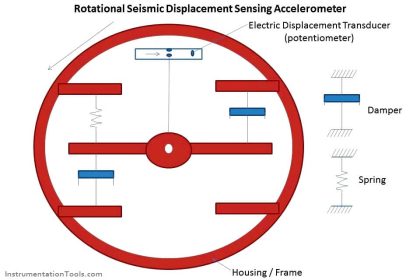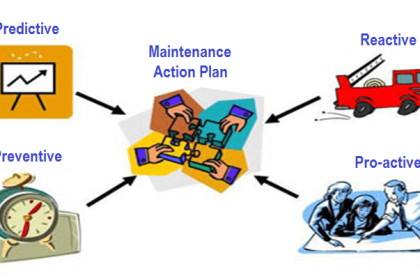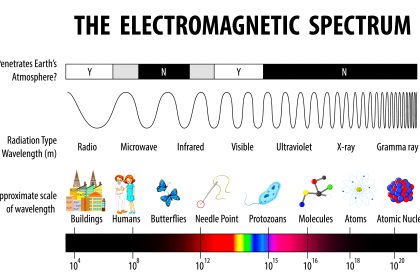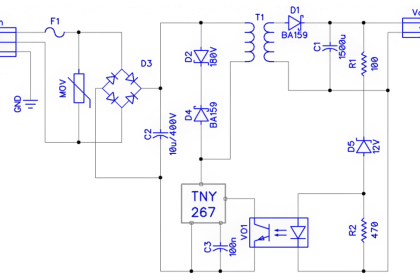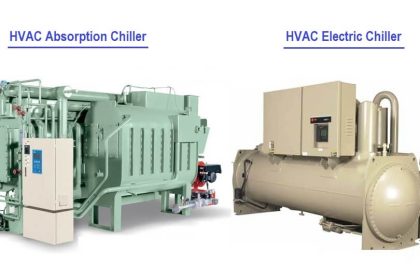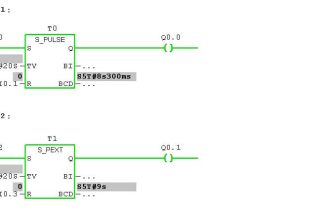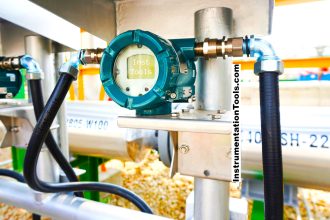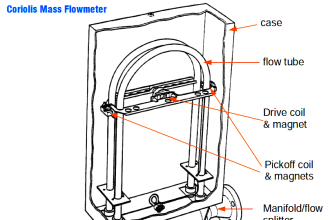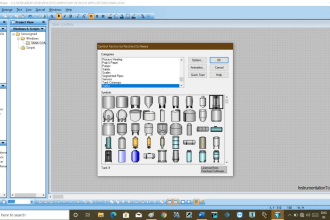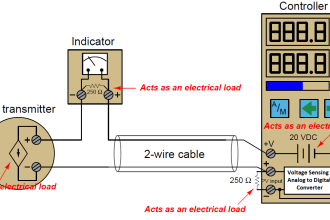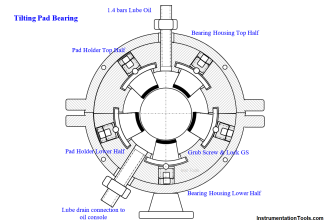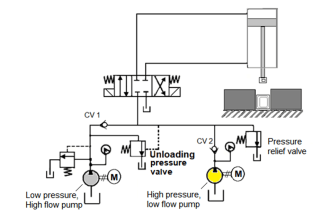As technology advances in industrial automation, new demands arrive to make the work faster and more efficient. Mostly, the ideas come from the outside world where new technologies are adopted.
For example, when biometric systems were used in office attendance, it reduced the need for manual intervention and also increased punctuality, efficiency, and accuracy, and decreased proxy cheating; because everything was recorded.
This technique was then started to be used in industrial automation for accessing SCADA and HMI system graphics. In the same way, one of the most recent ones used in industrial automation is RFID technology. In this way, we will see the concept of RFID technology in industrial automation.
What is an RFID system?

RFID stands for radio frequency identification system. RFID is a type of wireless communication where a radio spectrum of electromagnetic waves is used. In simple terms, it is a means of object identification by detecting radio frequency waves in the spectrum. The most common methods used for this are electromagnetic coupling, electromagnetic induction, and radio waves (ultra-high frequency or UHF).
As it is completely wireless, contact between objects is avoided and this results in a safe and hygienic operation. The most general example of this system is when you place your metro train travel card above the RFID machine to automatically detect it and open/close the gate.
Types of RFID Systems
Four types of radio frequencies are generally used in RFID systems.
They are as follows:
- Low frequency – It has a frequency range of 30 – 300 kHz and works on electromagnetic induction.
- Medium frequency – It has a frequency range of 300 kHz – 3 MHz and works on electromagnetic coupling.
- High frequency – It has a frequency range of 3 – 30 MHz and works on electromagnetic induction.
- Ultra-High frequency – It has a frequency range of 300 MHz – 3 GHz and works on radio waves.
How does RFID work?
The RFID system consists of two main components – an antenna (reader/writer) and an RF tag. The sender system consists of an antenna which requires power supply for operating. It transmits radio waves and also has a receiver for receiving the feedback data from the tag.
This data is then sent to either an internal microcontroller or a PC for further computing. The tag consists of a transponder for catching the radio waves sent by the antenna and is bidirectional (sending its data back to the antenna in encoded and binary form), a memory containing its own data, and a microcontroller.
Now, refer to the below image. The reader is continuously sending radio waves across its field. When a tag comes in its range, the waves get coupled with the field across the tag and induce a voltage inside the tag. This is used to feed the internal circuitry of the tag.
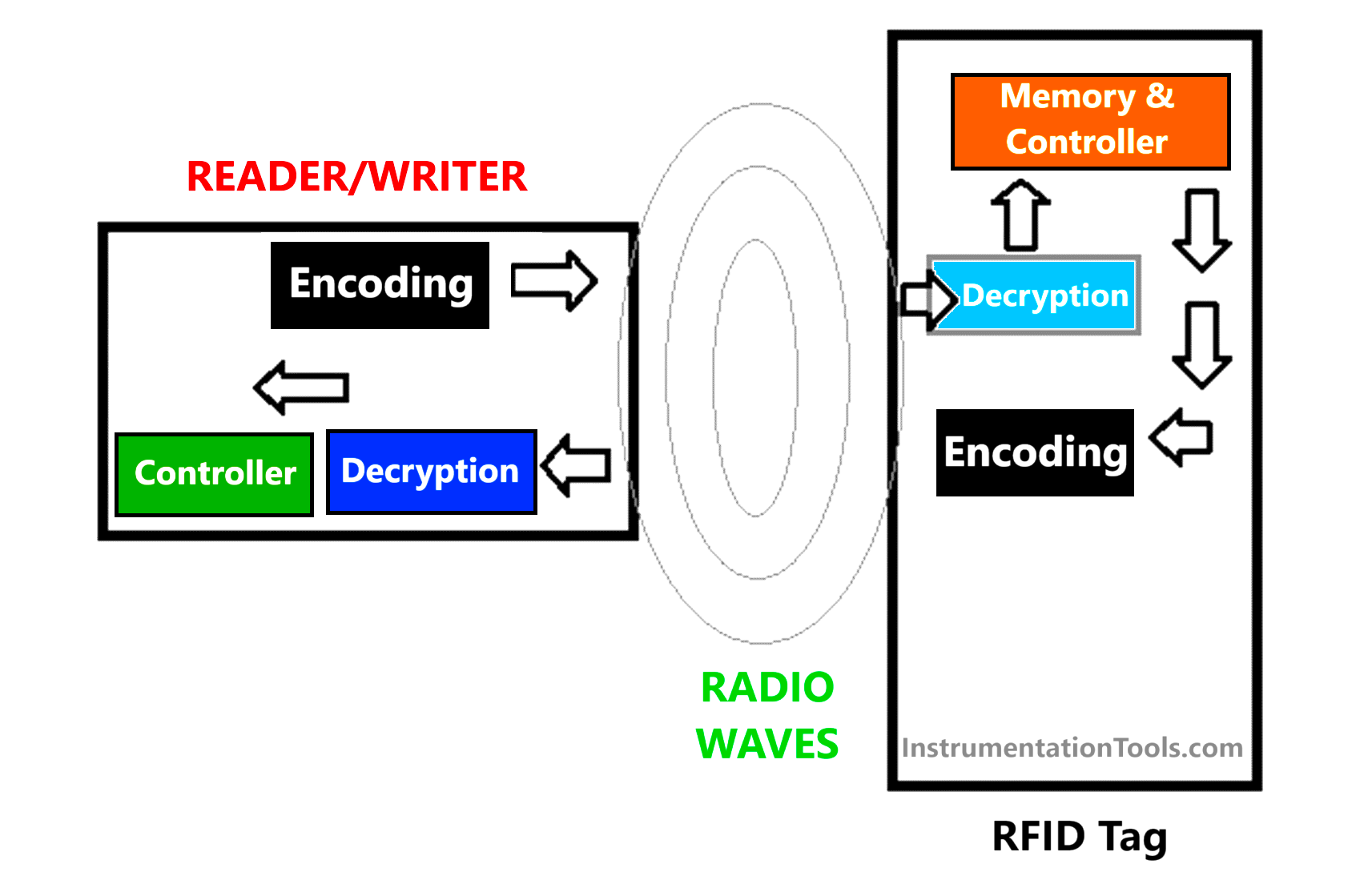
The data from the tag will be passed in binary format and due to the use of semiconductors, high-switching frequency occurs and the data is thus passed through modulation of the carrier frequency.
The reader catches this modulated data and further sends it inside its controller for processing. It can then identify whether this data is of the same ID which needs to be matched or not.
Types of RFID Tags
The two main types of RFID tags used are active and passive. Active tags have their own power supply, whereas a passive tag does not have its own power supply. The passive tag will derive power from the radio frequencies sent by the reader/writer.
These waves induce a current in the tag’s antenna and enable mutual communication between the reader and the tag. The memories used in tags vary from small 2KB ROM to 128KB ROM.
RFID and industrial automation
RFID finds its use on a vast scale in industrial automation applications. Let us have a look at a few of them:
- RFID finds great use in 21CFR part compliance systems. SCADA systems will require employees to have RFID tag cards with them to log in or log out of the system. Their card will have their name and employee code. RFID will be read by the SCADA PC through the reader/writer, which has mostly Ethernet ports in it, for communicating with the outside world. The programmer will manually feed all codes in the SCADA program and only the employee codes that match them will get access to the SCADA system for operation and will also get recorded in audit trails about their login/logout time and the user data.
- RFID is also used in conveyor systems where the RFID system will continuously monitor the boxes with RFID tags and sort them, throw out unwanted boxes, and thus prevent losses in the system and also remove manual intervention.
- Assembly line production uses RFID tags on their products, like vehicle parts, to track more advanced information like manufacturing dates, inspection results, quality data, and other production-related data stored in the tags. They can be then processed by PLC systems for further actions and control.
- RFID is widely used in warehouse automation and logistics automation, for needing to track hundreds of stock items, received items, or dispatched items, without opening them or manually checking each of them.
- UHF can scan multiple tags at a time due to its frequency spectrum. So, these types of RFID systems are used to detect multiple RFID tags in one go and save time for production.
- RFID is also extensively used in safety and critical automation systems, where human operators cannot go and is hazardous for human presence or operation. For example, an RFID valve will open only when its closed position is detected first. The same goes for close operation. This means, all the safety checks will take place through RFID code detection before going to the next stage.
In this way, we saw the use of RFID technology in industrial automation.


